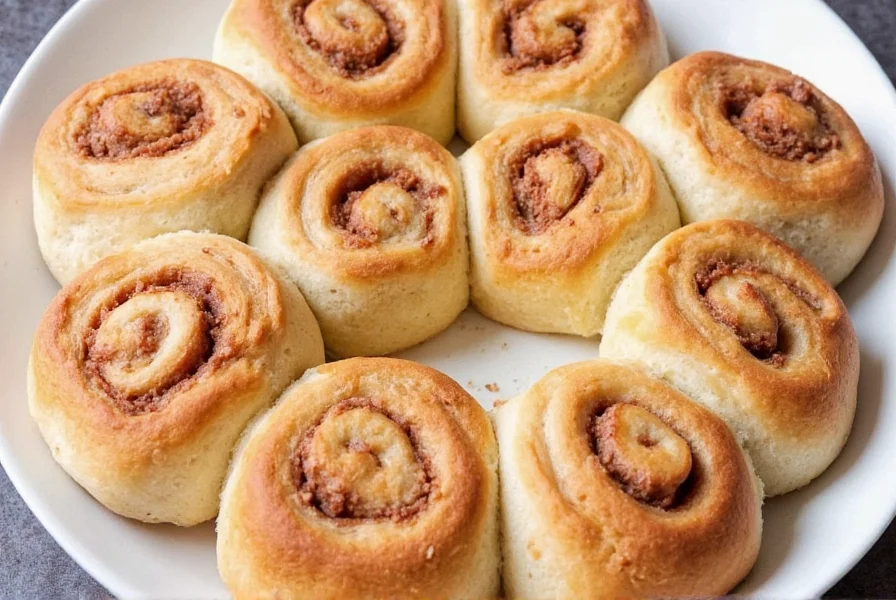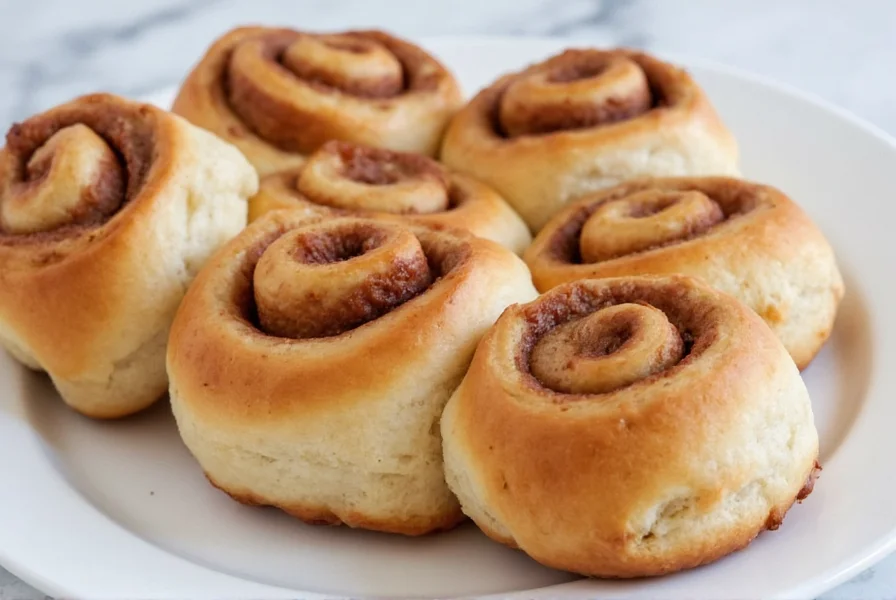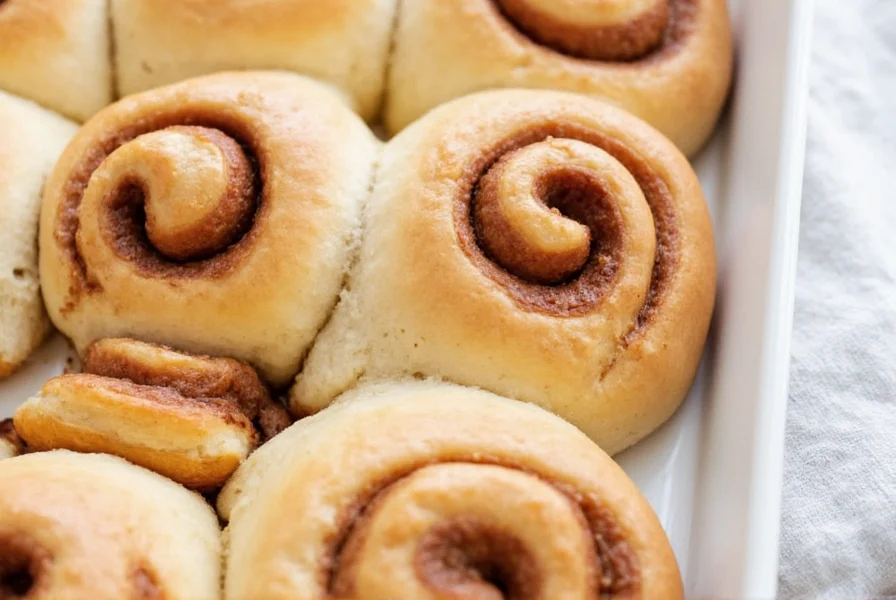Why This Easy Cinnamon Rolls Recipe Actually Works
Most "easy" cinnamon roll recipes fail because they skip crucial steps that affect texture and flavor. Our approach balances simplicity with baking science. The secret? A 2-hour first rise at room temperature develops flavor without requiring precise temperature control. Unlike recipes that use instant yeast (which can fail if water is too hot), we use reliable active dry yeast with a simple proofing test.

Ingredient Breakdown: What Makes This Recipe Truly Simple
Understanding why each component matters helps you adapt without compromising results:
| Ingredient | Why It Matters | Common Substitutions |
|---|---|---|
| Active dry yeast | More forgiving than instant yeast for beginners | Instant yeast (use 25% less) |
| Bread flour | Higher protein creates better structure | All-purpose flour (add 1 tbsp extra) |
| Brown sugar | Melts better than white sugar for gooey filling | Coconut sugar (less sweet) |
| Cream cheese frosting | Acidity balances sweetness perfectly | Vanilla glaze (simpler option) |
Step-by-Step: Foolproof Cinnamon Rolls Instructions
Follow these precise steps for guaranteed success. Total active time: 30 minutes.
- Mix dough: Combine 1 cup warm milk (110°F), 2 ¼ tsp yeast, and 2 tbsp sugar. Wait 5 minutes until foamy. Add ⅓ cup melted butter, 1 egg, 3 ½ cups flour, and 1 tsp salt. Mix until shaggy dough forms.
- Knead: Turn onto floured surface. Knead 5 minutes until smooth and elastic. (Tip: Dough should pass the windowpane test - stretch a small piece thin enough to see light through without tearing).
- First rise: Place in greased bowl, cover with damp cloth. Rest at room temperature 2 hours until doubled. (No oven light trick needed - patience yields better flavor).
- Prepare filling: Mix 1 cup brown sugar, 3 tbsp cinnamon, and ¼ tsp salt. Cut ⅓ cup cold butter into small cubes.
- Roll and fill: Roll dough into 18x12 inch rectangle. Sprinkle filling evenly, leaving ½ inch border. Place butter cubes evenly over filling before rolling tightly.
- Second rise: Cut into 12 rolls. Place in greased 9x13 pan. Cover and rest 45 minutes until puffy.
- Bake: 350°F for 22-25 minutes until golden. Frost immediately with cream cheese frosting.
Troubleshooting Common Cinnamon Roll Problems
Even easy recipes encounter issues. Here's how to fix them:
- Dense rolls: Usually from over-flouring. Measure flour by spooning into cup then leveling - never scoop directly. Dough should feel slightly tacky but not stick to clean fingers.
- Filling leakage: Caused by uneven rolling or cold filling ingredients. Ensure butter cubes are small (pea-sized) and distributed evenly before rolling tightly from the long edge.
- Yeast didn't activate: Water temperature is critical. Use a thermometer - 110°F is ideal. Too hot kills yeast, too cold won't activate it.
Time-Saving Tips for Busy Bakers
Our easy cinnamon rolls recipe includes these efficiency hacks:
- Overnight option: After cutting rolls, cover pan tightly and refrigerate 8-12 hours. Remove 30 minutes before baking.
- Freezer-friendly: Bake rolls, cool completely, then freeze unfrosted. Thaw at room temperature 2 hours before warming and frosting.
- No mixer needed: This recipe works perfectly with hand mixing - no stand mixer required.

Simple Variations to Try
Once you master the basic easy homemade cinnamon rolls recipe, experiment with these adaptations:
- Apple cinnamon rolls: Add ½ cup finely diced apples to the filling
- Gluten-free version: Substitute 1:1 gluten-free flour blend (add 1 tsp xanthan gum)
- Cream cheese swirl: Mix 4 oz softened cream cheese with ¼ cup sugar before adding filling
Frequently Asked Questions
Can I make cinnamon rolls without a stand mixer?
Yes, this easy cinnamon rolls recipe is specifically designed for hand mixing. After combining ingredients in a bowl, turn the shaggy dough onto a floured surface and knead by hand for 5 minutes until smooth and elastic. The windowpane test (stretching a small piece thin enough to see light through) confirms proper development.
Why did my cinnamon roll dough not rise?
Most rising failures come from inactive yeast. Always proof active dry yeast in warm milk (110°F) with sugar for 5 minutes before adding other ingredients. If it doesn't become foamy, your yeast is dead - start over with fresh yeast. Cold kitchen temperatures also slow rising; find a warm spot (80-85°F) away from drafts.
How do I prevent cinnamon filling from leaking out?
Three keys to leak-proof filling: 1) Use cold butter cut into small cubes mixed with the sugar-cinnamon blend 2) Leave a ½-inch border when spreading filling 3) Roll tightly from the long edge, pinching the seam closed. Our simple cinnamon roll instructions include these specific techniques that prevent the common leakage problem.
Can I prepare cinnamon rolls the night before?
Absolutely. After cutting the rolled dough into rolls and placing them in the pan, cover tightly with plastic wrap and refrigerate 8-12 hours. Remove from fridge 30 minutes before baking. The slow cold rise develops deeper flavor while saving morning preparation time - perfect for holiday breakfasts.











 浙公网安备
33010002000092号
浙公网安备
33010002000092号 浙B2-20120091-4
浙B2-20120091-4